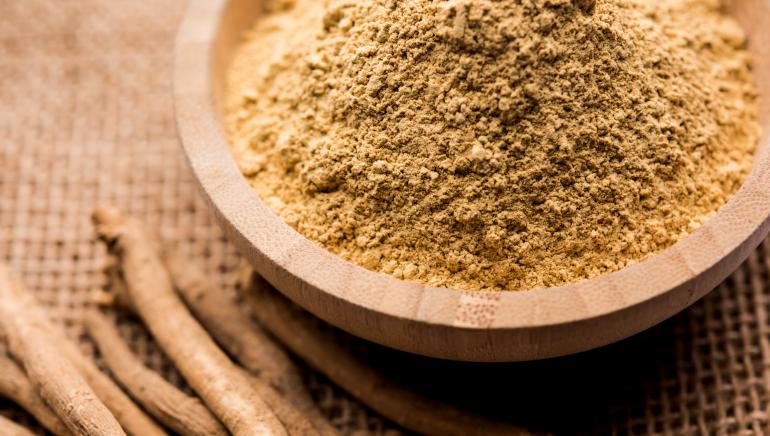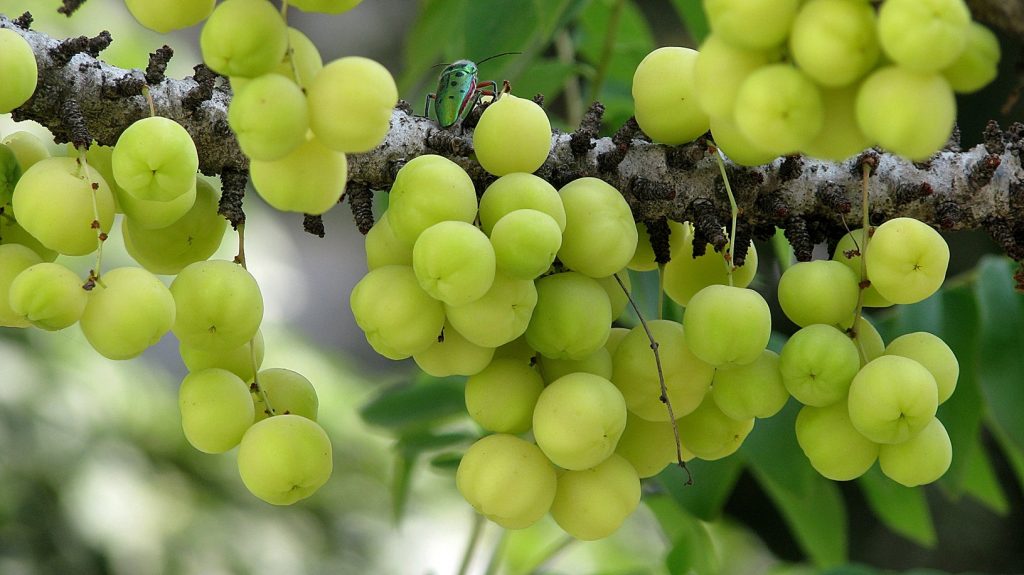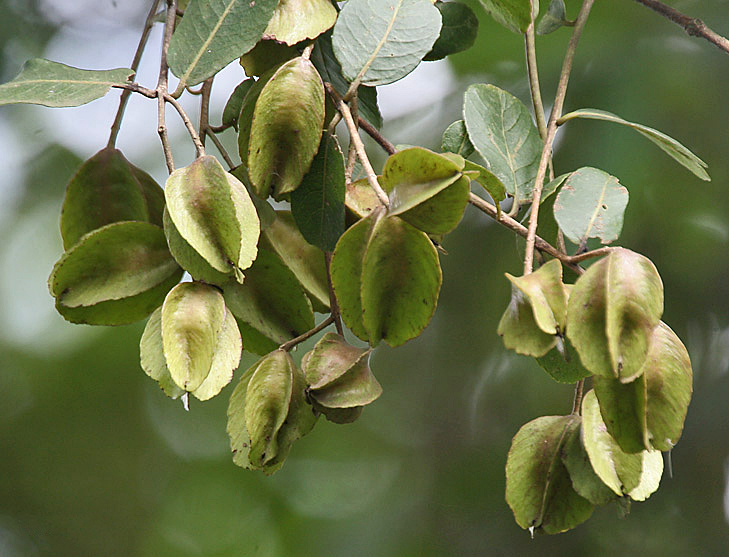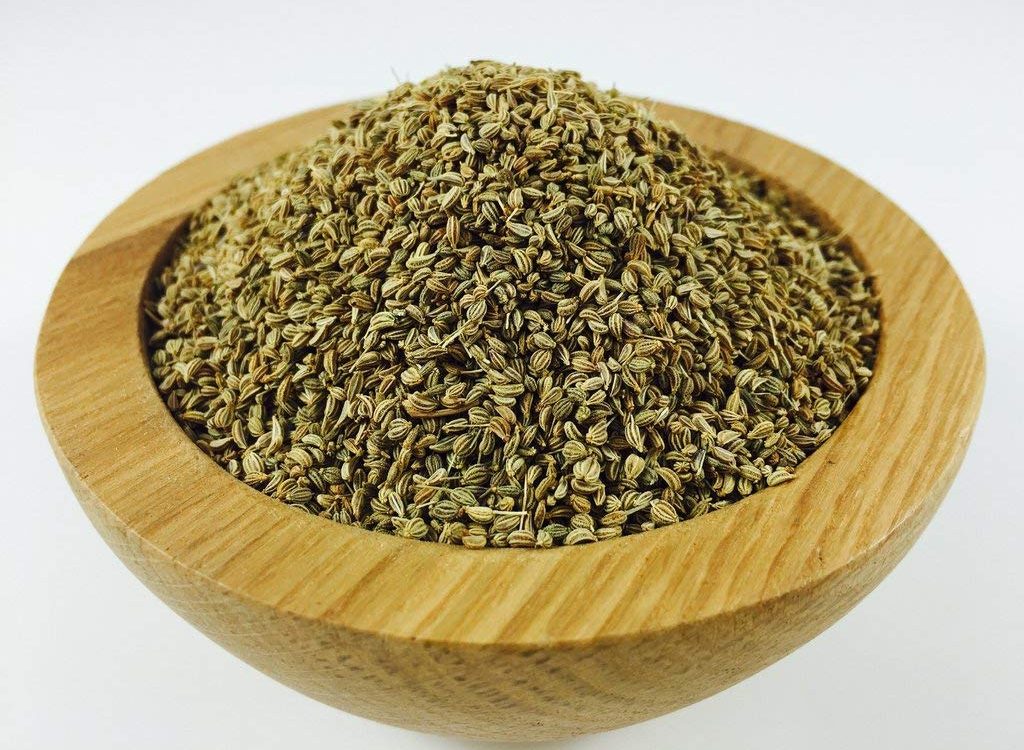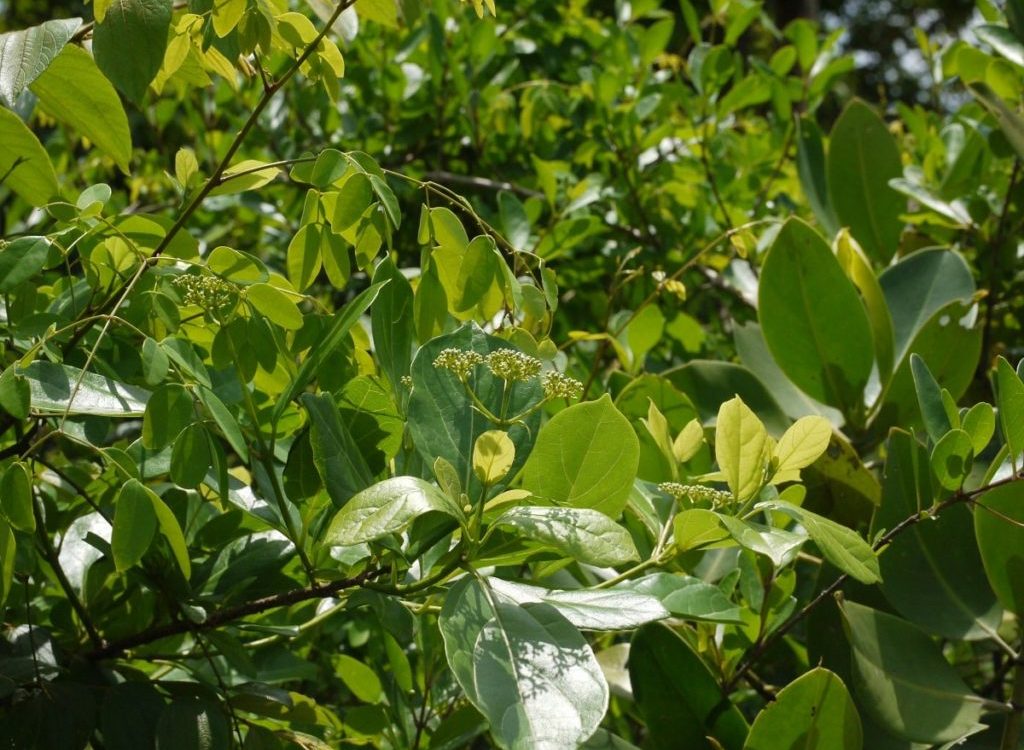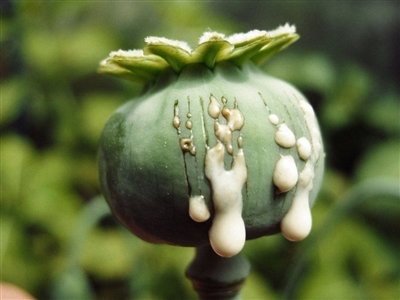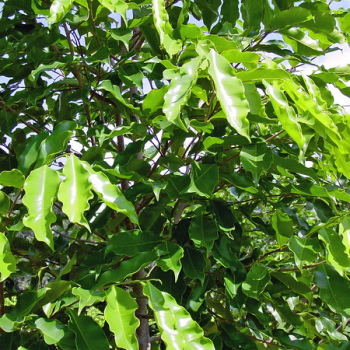Author Archives: Dr. Vaidya Karanvir Singh
Thyroid
- August 5, 2020
- Posted by Dr. Vaidya Karanvir Singh
- 0 Comment(s)
Diet Chart for Thyroid
Thyroid gland is an endocrine gland present in the neck that contains two lobes connected by an isthmus. This gland produces hormones known as thyroxine/T4, triiodothyronine/T3, & calcitonin. When the thyroid gland in our body produces an excess of thyroxine hormone it is known as Hyperthyroidism. This disease is considered as a metabolic disorder that causes irregular heartbeat and unintentional weight loss. Hyperthyroidism is serious issue never ignore it as can lead to several other conditions. Women are more affected by this disease as compare to men. These all conditions appear due to wrong eating habits & sedentary lifestyle. If you have hyperthyroidism start with the following food items mentioned below:
| Foods to be Consumed | Foods to be avoided | |
|---|---|---|
| Fruits | Blueberries, blackberries, apple, apricot, cherries, dates, grapefruit, kiwi, papaya, cranberries, raspberries, banana. | Strawberries, peaches, sweet potatoes, cassava, pears, dried fruits. |
| Vegetables | Tomatoes, peas, lentils, chickpeas, and beans, onions, beans, garlic. | Cabbage, broccoli, cauliflower, spinach, kale, Brussels, sprout. |
| Grains | Maize, barley, wheat, rye, brown rice, quinoa. | White Bread, pasta , rice, millet. |
| Dairy Product | Raw butter, eggs, yogurt. | Soy milk, tofu, cakes, cookies, butter, choclates. |
| Legumes | Sunflower seeds, mung beans, black beans, peas, lima beans. | |
| Nuts | Hazel nuts, almonds, cashew, pumpkin seeds, walnuts, brazil nuts. | Peanuts, millet, pine nuts |
| Oils | Coconut oil, olive oil. | Canola oil. |
| Spices | Turmeric, cinnamon, ginger, black pepper, chillies, peppermint, parsley, cilantro. | Excessive salt intake. |
| Beverage | Green tea, orange juice, fresh fruit juice. | Tea, Coffee, alcohol, carbonated soft drink. |
Hypertension
- August 5, 2020
- Posted by Dr. Vaidya Karanvir Singh
- 0 Comment(s)
Diet Chart for Hypertension
The unhealthy life-style and not getting proper sleep give birth to a silent killer known as Hypertension (High blood pressure). The normal blood pressure is the amount of blood your heart pumps but in high blood pressure the more blood is pumped through your heart that makes your arteries narrower. Nowadays the risk of high blood pressure is increasing people at the age of 18 are facing this issue. But mostly after the age of 45, people are facing this problem.
A good and nutritious diet plays a major role in the protection of heart. You can prevent this condition by adopting the foods which lowers blood pressure, decreases cholesterol, and help to manage the weight loss. Here we recommended some of the best foods that one must be followed by every individual to prevent from heart diseases.
| Foods to be Consumed | Foods to be avoided | |
|---|---|---|
| Fruits | Blueberries, raspberries, strawberries, banana, pomegranates, avocado, sweet potatoes, kiwi, watermelon, apricots, dates, grapes, peaches, pineapple, raisins, oranges, mangoes. | Frozen fruits. |
| Vegetables | Leafy green vegetables like turnip greens, spinach, beet greens, broccoli, kale, swiss chard, garlic, tomatoes, potatoes, green peas, mushrooms, tuna , beans, cabbage, fennel. | Canned vegetable juices, bottled tomato products, baked vegetables. |
| Grains | Oatmeal, whole wheat bread, maize, barley, popcorn, unsalted pretzels. | White rice, white bread, corn bread. |
| Dairy Product | Skim milk, yogurt, dark chocolates, low- fat mayonnaise. | Salted snacks, whole milk products, butter. |
| Legumes | Chickpeas, Peas, Soybeans, Kidney beans, Yellow lentil, Pink lentil, Green gram. | White gram, black gram. |
| Nuts | Pistachios, unsalted almonds, peanuts, walnuts, sunflower, pumpkin, or squash seeds. | Cashews, Excessive peanuts |
| Oils | Olive oil, corn, canola, sunflower oil. | |
| Spices | Cinnamon, basil, thyme, Turmeric, Ginger, Coriander, Cinnamon, Cloves, Curry powder, Black pepper. | Excessive salt, red chillies. |
| Beverage | Fresh fruit juice, Lime juice, Beetroot juice, Green tea, Herbal tea. | Alcohol, tea, coffee, cold drinks, energy drinks. |
PCOD (Polycystic Ovarian Disorder)
- August 5, 2020
- Posted by Dr. Vaidya Karanvir Singh
- 0 Comment(s)
Diet Chart for PCOD
Polycystic ovarian syndrome(PCOS) is condition in which a woman has an imbalance in female sex hormones. It is common among women at reproductive age group. Women with PCOS may have infrequent or prolonged menstrual periods or excess male hormones (androgen) levels. They may present with disturbance in frequency and duration of menstrual cycle associated with increased levels of androgens. Ovaries may be filled with follicles along with non-release of ova. PCOS can cause symptoms including excess facial and body hair, abnormal menstruation, acne vulgaris, and mood changes. It can also make it difficult to become pregnant, and may significantly harm a person overall health if left untreated. According to Ayurveda PCOS cases clinically are seen of two types, one is Kapha Pradhana and other Pitta Vataja pradhan vyadhi.
A healthy and nutritious diet full of Vitamins, Carbohydrates, and fibres plays an important role in regulating hormonal levels and also improves immunity. As this condition develops due to unhealthy eating habits and bad lifestyles. We recommend the best diet chart through which you can prevent and control the symptoms of PCOS.
| Foods to be Consumed | Foods to be avoided | |
|---|---|---|
| Fruits | Kiwi, pomegranate, cherries, apple, pineapple, banana, mango, coconut, pear, grapes, papaya, blueberries and strawberries. | Frozen fruits. |
| Vegetables | Broccoli, cauliflower, and Brussels sprouts, red leaf lettuce, red peppers Beans, lentils, pumpkin, tomatoes, kale, spinach . | white bread, anything made with white flour. |
| Grains | brown rice, wheat, oats, whole grain, corn, barley. | white bread, white rice, refined grains. |
| Dairy Product | Low-fat milk, fresh yoghurt, curd, cow’s ghee, buttermilk, egg white. | High-fat milk, cheese, butter, ice-cream, mayonnaise, cakes, cookies. |
| Legumes | Lentils, green gram, kidney bean, chickpeas. | Black gram, white gram. |
| Nuts | Almonds, walnuts, cashew nuts, flax seeds, pistachio, peanuts. | None |
| Oils | Olive oil, coconut oil, mustard oil. | Soybeans oil, sunflower oil. |
| Spices | Cumin, fennel seeds, fenugreek seeds, turmeric, coriander, cinnamon, black pepper. | Red chilli, excessive salt. |
| Beverage | Coconut water, aloe vera juice, amla juice, orange juice, chamomile tea, green tea, dandelion tea. | Alcohol, coffee, tea, energy drinks, cold drinks. |
Ashwagandha / Withania Somnifera
- August 1, 2020
- Posted by Dr. Vaidya Karanvir Singh
- 0 Comment(s)
Botanical Classification of Ashwagandha:
Latin name- Withania Somnifera
Family- Solanaceae
Class- Magnoliopsida
Kingdom- Plantae
Sub-Kingdom- Viridiplantae
Infra Kingdom- Streptophyta (Land Plants)
Super Division- Embryophyta
Division- Tracheophyta (Tracheophytes or Vascular Plants)
Sub Division- Spermatophytina (spermatophytes or Seed Plants)
Super Order- Asteraceae
Order- Solanales
Names in different languages:
English name: Indian winter cherry, Poison gooseberry, Indian ginseng
Hindi name: Asgandh, Asgandha
Bengali name: Asvagandha
Tamil name: Askulang, Amukura
Gujarathi name: Ghoda aakun, Aasandha
Kannada name: Ashvagandhi
Marathi name: Doragunj, Asandh
Its Sanskrit synonyms:
Vajigandha, Turagnagandha, Ashwagandha, Hayagandha in which vaji, ashwa, and haya means horse and gandha mean smell. The smell of this plant is quite alike horse dung.
Gatrakari in which gatra means body and this herb helps to improve the body’s strength and mass.
Balya- It improves the strength
Kushtagandhi, Pivari
Vajikari, Turagi- Here the vaji means horse and it improves the sexual performance like that of a horse
Varahakarni- Varaha means pig and Karna mean ear. Its leaves are like the ear of a pig
Description:
Ashwagandha is also known as Indian ginseng and it has been used in Ayurveda for a very long time as a crucial part of ayurvedic treatment for various health issues. In Ayurveda, Ashwagandha is considered as a Rasayana (potent rejuvenative agent as it increases the vitality and longevity of an individual. It improves memory power, preserves mental functions, and increases intelligence. Due to its anti-inflammatory action, it is mainly used in all types of inflammatory disorders. The word Ashwagandha means ‘smell of a horse’. The two main reasons behind its name are- first is because of its roots that emit the smell of horse. The second reason is that by consuming Ashwagandha in any form may improve vitality, increases energy levels and strength similar to that of a horse.
Nutrients in Ashwagandha
Ashwagandha is rich in minerals like calcium, phosphorus, potassium, and magnesium. It is grown and cultivated in different regions of the country.
What are the medicinal properties of Ashwagandha?
- Aphrodisiac
- Rasayana (Rejuvenating)
- Anti-inflammatory
- Anodyne
- Anti-depressant
- Anti-stressor
- Immuno-modulator
- Adaptogenic
- Antioxidant
- Anti-arthritic
- Carminative
- Uterine tonic (beneficial in uterine disorders, endometriosis and uterine pain and provides strength to the uterus)
- Cardioprotective
- Anti-diabetic
- Anti-ulcerogenic
- Anti-cancer
- Mild antihypertensive
- Mild Anti-asthmatic
- Hematogenic
- Anti-malarial
- Nervine sedative
- Mild Hypnotic
- Anthelmintic (leaves)
- Diuretic (seeds)
- Anabolic effect
What are the Ayurvedic properties of Ashwagandha?
Rasa (Taste)- Madhura (Sweet), Tikta (Bitter), and Katu (Pungent)
Guna (Quality)- Snigadh (Unctuous or Oily) and Laghu (Light)
Veerya (Potency)- Ushna (Hot)
Vipaka (Resultant)- Madhura (Sweet)
Prabhava (Therapeutic Effect)- Rejuvenation & Tonic
Dosha Karma (Effect on doshas)- Pacifies Kapha and Vata dosha
Dhatu (Tissue effect)- Rasa, Rakta, Mamsa, Medas, Asthi, Majja and Shukra
What are the therapeutic uses of Ashwagandha?
- Ashwagandha use as Tonic:
Ashwagandha is beneficial in preventing the body from diseases by boosting up the immune system functioning. It enhances the non-specific immunity and also alleviates stress, increases physical stamina, and improves the overall health of the body.
- Heart Diseases:
Ashwagandha is considered a health tonic that is used in the treatment and management of heart-related diseases. Oxidative stress and the increase of free radicals in the body increase the pressure and burden on the heart. It maintains the proper functioning of the heart and affects its structure too. It has energy-boosting properties that provide energy and improve overall functioning.
- Hypertension (High Blood Pressure):
Ashwagandha has a greater protective effect on high blood pressure when it is given with milk as compared to when given with water. Changes are seen in both diastolic and systolic blood pressure levels. This herb reduces the high blood pressure levels by inducing a calming effect on the mind and by reducing the stress levels. Hence, it is used in balancing the BP levels as an adjunct with conventional agents or as a natural alternative.
- Muscle Weakness
Ashwagandha plays an important role in providing strength to the muscles and also increases muscle mass activity. It also increases the muscular force in the upper and lower extremities and trunk region. A reduction in the fat content in the body increases the muscle mass.
- Arthritis:
Arthritis is a painful and inflammatory condition of the joints and Ashwagandha plays an anti-arthritic role by reducing the inflammation as well as pain. It has an antioxidant property that prevents the production of reactive oxygen species. It also improves the signs and symptoms of arthritis such as redness, tenderness, swelling, and improves the overall flexibility of joints.
Most of the researchers have found that Ashwagandha roots and leaves play an important role in lowering high blood glucose levels. It is known to be the most beneficial herb for the management of diabetes mellitus type-2.
Amalaki / Emblica Officinalis
- July 31, 2020
- Posted by Dr. Vaidya Karanvir Singh
- 0 Comment(s)
Botanical Classification (Taxonomy)
Latin Name- Emblica Officinalis
Family- Phyllanthaceae
English Name- Indian Gooseberry, Malacca Tree, and Emblic Myrobalan,
Hindi Name- Amla
Sanskrit Name- Amalaki, Amalika, Dhatri, Dhatriphala, Sriphalam, Vayastha, Aonla, Vrushya,
Kingdom- Plantae
Sub-Kingdom- Viridiplantae
Infra Kingdom- Streptophyta
Super Division- Embryophyta
Class- Magnoliopsida
Genus- Phyllanthus L. (Leaf Flower)
Species- Phyllanthus Emblica (Emblic)
Division- Tracheophyta/ Tracheophytes
Sub Division- Spermatophytina/Spermatophytes (Seed Plants)
Super Order- Rosanne
Order- Malpighiales
Amla is also known as “Indian gooseberry” and it is rich in nutrients. It is the richest source of vitamin C. It improves digestive power and relieves acidity. It is also good for diabetic patients as it controls blood glucose levels. It has been used in Ayurveda as a Rasayanic tonic for many ages that helps to brighten the skin, purify the blood, and improve eyesight naturally.
Names in different languages:
English name: Indian Gooseberry
Hindi name: Ambala, Awla, Amlika, Amla, Anwala
Punjabi name: Ambul, Ambalo, Aamlaa
Kannada name: Bettada Nelli Kayi
Telugu name: Nellikaay, Nellikkali, Perunelli
Farsi name: Amlaj
Malayalam name: Nelli
Urdu name: Amal khushk, Aamla
Bengali name: Amla, Aamla, Aamro and Aamalaki
Arabic name: Amlakhushk
Manipuri name: Heikru
Marathi name: Avalkati, Avil, Avka, and Aouli
Assamese name: Amlokhi, Amlaki, Amlok, Amla
Konkani name: Avalo
Kannada name: Nellikay Nelli
Its Sanskrit synonyms:
Sheetaphala- It has a coolant property
Vayastha, Vayasya- It has anti-aging property
Dhatri- It takes care of the patient as a mother
Divya, Shriphala- Its fruit is auspicious
Amrutaphala- As good as the nectar
Other synonyms are- Seeduphala, Shivam, Shanta, Jatiphalarasam Seedurasa, Vrishyaphala, Varshaphala, Shanta, etc.
Ayurvedic Properties
- Rasa (Taste)- Sour Taste is the dominant and other 4 tastes are present except saline taste – Madhura (Sweet), Amal (Sour), Tikta (Bitter), Katu (Pungent), and Kasaya (Astringent)
- Guna- Guru (Heavy), Sheeta (Cool) and Ruksha (Dry)
- Virya (Potency-Sheeta (Cold)
- Vipaka (Resultant)- Madhura (Sweet)
- Therapeutic Effect – Prabhava (Rejuvenation)
- Dosha Karma (Effect on Humor)- Amla pacifies mainly Pitta, but it also alleviates the Kapha and Vata.
- Dhatu (Effect on tissues)- Rasa, Rakta, Medas and Shukra dhatu
What are the therapeutic benefits of amalaki?
- Kanthya- It is useful in throat related diseases and improves voice
- Hrudya- It is good for the heart
- Daahahara- It treats burning sensation
- Rasayana- It has rejuvenative and anti-aging property
- Vrushya- Aphrodisiac
- Javarahara- It is used in fever
- Premhaghna- It is used in diabetes mellitus and urine related issues
- Raktapittaghna- It is used in blood-related disorders
- Chakshushya- It improves vision and also good for eyes
- Vayasthapana- It has an anti-aging action
What are the therapeutic uses of Amalaki?
Here are the therapeutic uses of amalaki-
Amla (Indian Gooseberry) shows anti-hyperglycemic effects on the body. It has no side effects. In diabetes mellitus, this extract of fruit interferes with the absorption of glucose in the gut and stops the entry of glucose in the blood. It balances the blood glucose levels post-meal and delays the digestion of glucose.
Osteoporosis
It is the richest source of Vitamin C and is recognized as one of the essential nutrients for the prevention and treatment of osteoporosis. It keeps the bones healthy and strong and also improves the absorption of the minerals and increases bone mineral density. In Ayurvedic Medicine, Amla can be used along with Ashwagandha, Arjuna, and other Ayurvedic mineral medicines to improve bone strength. It also increases bone mineral density.
Anemia
Amla is an anti-anemic fruit that has iron and vitamin C present in it. It helps in the better absorption of the iron because it contains ascorbic acid that enhances the iron absorption. It also increases the hemoglobin levels in the body.
Peptic Ulcers
In Peptic Ulcers, it shows very good results by working on reducing the production of acid in the stomach. Its antioxidant action helps to protect the gastric mucosa from any damage and also prevents the ulceration. Various complications of peptic ulcers such as gastric carcinoma will also be treated with it and also the symptoms like pain in the abdomen, weight loss, poor appetite, nausea, and vomiting.
Gastritis
This fruit has a natural antacid property that provides relief from the symptoms of gastritis. It controls the acidic production in the stomach and reduces abdominal pain, nausea, vomiting, and heartburn, etc due to the hyperacidity.
Arjuna / Terminalia Arjuna
- July 30, 2020
- Posted by Dr. Vaidya Karanvir Singh
- 0 Comment(s)
Arjuna which is also called Arjun Tree and this medicinal plant is mainly used for heart diseases due to its cardioprotective and cardio-strengthening properties. It provides strength to the cardiac muscle (heart muscle) and normalizes the heartbeat. It has various minerals present in it, which helps to prevent bone loss and improves bone mineral density. It has ulcer protection property, so it is used for ulcer treatment, specially indicated for peptic ulcers. It reduces the frequency of urination and frequent urination.
Botanical Description
It is native to India but it is also found in Pakistan, Sri Lanka, Myanmar, and some other Asian Countries. It grows up to a height of about 20 to 27 meters.
Its botanical classification:
- Latin name: Terminalia arjuna
- Family- Combretaceae
- Kingdom- Plantae
- Sub-Kingdom- Viridiplantae
- Infra Kingdom- Streptophyta (Land Plants)
- Super Division- Embryophyta
- Division- Tracheophyta
- Sub Division- Spermatophytina (Spermatophytes or Seed Plants)
- Class- Magnoliopsida
- Super Order- Rosanne
- Order- Myrtales
- Species- Terminalia arjuna (Arjun Tree)
Names in different languages:
- English name: Arjunolic Myrobalan, Arjun Tree
- Hindi name: Arjun
- Bengali name: Arjun
- Marathi name: Sadaru
- Tamil name: Neermarudhu, Poomarudhu, Marudam Patti
- Manipuri name: Maiyokpha
- Kannada Name: Holemaththi, Neer matti, Holedaasaala
- Gujarathi name: Sadado
Its Sanskrit Synonyms:
- Indradru- It is a big tree
- Dhavala- The external layer of bark is white
- Nadisarja- It is found on the banks of the river
- Partha, Dhananjaya, Partha, Virarksha, Shvetavaaha, Shvetavaaha, Kakubha, Nadi Sarja, Partha, kireeti, Dhootra Bhuruha, etc
Its different varieties:
There are mainly two types of Arjuna:
- Arjuna- Terminalia arjuna- It is of white variety
- Kakubha- Terminalia alata- It is of the black variety
What are the medicinal properties of Arjuna?
- Rasa (Taste)- Kasaya (Astringent)
- Guna (Quality)- Ruksha (Dry) and Laghu (Light)
- Virya (Potency)- Sheeta (Cold)
- Vipaka (Resultant)- Katu (Pungent)
- Prabhava (Action)- Cardiac Tonic
- Dosha Karma (Effect on Humor)- Pacifies Pitta dosha and Kapha dosha
- Dhatu (Tissue) Effect- Rasa, Rakta, Mamsa, Meda, and Asthi
- Organs Affected- Heart, Blood Vessels, and Bones
- It is mainly given in Heart Diseases
Medicinal Parts
Its bark is the main medicinal part used for therapeutic purposes. It has cardioprotective action on the body.
What are the medicinal properties of Arjuna?
The medicinal properties of Arjuna are:
- Cardiac tonic
- Antiarrhythmic
- Antianginal
- Cardiac Stimulant
- Anti-atherogenic
- Inotropic (modifies the speed or force of muscle contractions)
- Anti-hyperlipidemic
- Anti-thrombotic
- Anti-hemorrhagic
- Antihypertensive
- Antioxidant
- Anti-osteoporotic
- Anti-herpes virus
- Wound healing
- Anti-arthritic
- Anti-inflammatory
- Antacid
- Mucolytic
- Anti-ulcerogenic
- Urinary Astringent
- Anti-obesity
- Antihyperglycemic
- Antitoxin
- Antitumor
- Anti-ischemic
What are the Ayurvedic properties and benefits of Arjuna?
Arjuna is a very common herb for heart patients in Ayurveda. This herb contains many bioactive substances that improve the left ventricle functioning of the heart. It has cardioprotective action on the body which improves the cardiac function in people with a previous or recent history of cardiac trauma. It also increases the anaerobic cardiovascular performance of the heart. It has antioxidative characteristics that are comparable to Vitamin C. Arjuna also has anti-cancerous properties that prevent the growth of unhealthy cells.
- Cardiac Arrhythmia
Arjuna has cardio-tonic action that enhances the SR functioning and minimizes the arrhythmias (irregular heartbeat) occurrence. It reduces the risk of other heart-related problems like angina which is caused due to the aggravated Kapha dosha but the pain associated with it is like the symptoms of aggravated Vata. Kapha dosha accumulation leads to the production of Ama (toxins) in the body which gets blocked in the heart channels and causes a blockage leading to an aggravated Vata dosha. Arjuna removes the blockage of heart channels and pacifies the aggravated Vata dosha.
- High and Low Blood Pressure
Arjuna herb normalizes the blood pressure and stabilizes it at normal levels. It shows wonderful results in both cases with low or high blood pressure. Arjuna maintains the healthy functioning of the heart, which is likely to work in both cases. It improves cardiovascular endurance and in high blood pressure, it induces lowering effects.
Ajwain / Trachyspermum ammi
- July 29, 2020
- Posted by Dr. Vaidya Karanvir Singh
- 0 Comment(s)
Botanical description of Ajwain
- Scientific Name- Trachyspermum ammi
- Plant Family- Apiaceae
- Botanical Classification (Taxonomy)
- Class- Magnoliopsida
- Super Order- Asteranae
- Order- Apiales
- Family- Apiaceae
- Super Division- Embryophyta
- Division- Tracheophyta (Tracheophytes or Vascular Plants)
- Sub Division- Spermatophytina (Spermatophytes or Seed Plants)
- Kingdom- Plantae
- Sub-Kingdom- Viridiplantae
- Infra Kingdom- Streptophyta (Land Plants)
- Genus- Trachyspermum (Ajowan Caraway)
- Species- Trachyspermum Ammi
Description-
Ajwain is also known as carom seeds or ajowan caraway. It is an Indian spice and its ayurvedic medicines formulated with these are used in digestive ailment, mental diseases, and respiratory disorders.
It is also a common home remedy used for a variety of health conditions such as abdominal pain, cramps, intestinal gas, indigestion, vomiting, and abdominal distension, and diarrhea, loose stool, breathing trouble and heaviness in the abdomen after a meal.
Names in different languages:
- English name- Carom seeds
- Hindi name- Ajvain, Javaayin, Jabaayan, Ajavan, Ajwain, Ajovaam
- Punjabi name- Jabain
- Tamil name: Oman, Amam, Ajamo, Aman
- Kannada name: Oma, Omada kalu
- Bengali name: Yoyaan, Yamaarni, Jovaan, Yamaarni
- Farsi name: Nanakhaha
- Malayalam: Omam
- Telgu name: Omasu, Omami, Vamu, Oma
- Gujarati name: Javaain, Ajamaa, Ajamo, Yavaan
Its Sanskrit synonyms:
Teevragandha, Ajamodika, Yavanaka, Yavasahva, Bhumikadambaka, Yavagraja, Deepyaka, Brahmadarbha, Bhutika, Yavashavaya, and ugragandha (strong odor)
What are the medicinal properties of ajwain?
- Rasa (Taste)- Tika (bitter) and Katu (pungent)
- Guna (Qualities)- Teekshan (piercing and enters into deep tissues), Laghu (light to digest) and Rooksha (dryness)
- Veerya (Potency)- Ushna (hot)
- Vipaka (taste conversion after digestion)- Katu (pungent)
Its benefits:
- Gulma- Bloating and abdominal tumor
- Udara- Ascites
- Ruchya- Improves the taste
- Anaha- Abdominal bloating
- Deepani- Improves the digestive strength
- Krumi- Worm infestation
- Vishamaya- Poisoning, toxic conditions
- Shula- Abdominal colic pain
- Shukrahara- Decreases semen
- Shulahara- Treats abdominal colic pain
- Pleeha- Splenomegaly
What are the medicinal uses of ajwain?
Ajwain has the following healing properties:
- Antioxidant
- Anthelmintic
- Anti-inflammatory
- Anti-arthritic
- Antiflatulent
- Antispasmodic
- Digestive Stimulant
- Hypo-glycemic
- Analgesic
- Carminative
- Muscle relaxant
- Galactagogue
- Emmenagogue
- Antifungal
- Antimicrobial
- Antihypertensive
- Bronchodilator
- Antifilarial
- Diuretic
- Cardiac Stimulant
Culinary uses of Ajwain are:
Ajwain has great importance in Indian cooking that provides flavor and fragrance to food recipes. It also provides a unique taste to chapatis and recipes. It also prevents indigestion, abdominal pain, and all other abdominal disorders.
What are the therapeutic Indications of Ajwain?
Ajwain can be used in the following health conditions like:
- Digestive Health
- Loss of appetite
- Indigestion
- Gas or flatulence
- Bloating
- Distension of abdomen
- Loose stools or diarrhea
- Abdominal cramps
- Irritable bowel syndrome (IBS)
- Intestinal parasites
- Heart and Blood-related disorders like High cholesterol levels, Atherosclerosis, Bradycardia (Slow Heart Rate)
- Lungs and airways like Chronic cough, Asthma, Productive cough with foul smelly sputum, Muscle,
- Bones and Joints like muscle spasm, rheumatoid arthritis
- Gout (used with celery seeds)
- Women’s Health
- Secondary amenorrhea
- Premenstrual syndrome (PMS)
- Backache during periods
Its therapeutic uses:
Ajwain Water for babies
Ajwain water is a milder remedy for infantile colic that alleviates abdominal pain in babies. It can be used in combination with fennel water for getting quick results. It works effectively in pain occurs due to excess intestinal gas and ingestion.
Intestinal Gas & Flatulence
It can be used to treat gas and flatulence as it reduces the gas formation in the abdomen and releases the already formed in the intestine. It also has carminative and antiflatulent properties on the body which gives very good results.
Heaviness in the abdomen
The most important benefits of drinking ajwain water are it helps in relieving abdominal heaviness and bloating. It generally occurs after taking a meal in most people. In this case, you should drink ajwain water immediately after a meal.
Ajwain Water for Constipation
If you have improper bowel movements and suffer from mucus discharge in the stool, then Ajwain water is the best remedy for relieving constipation. You have to drink this water once a day at night in a dosage of 120 ml before bedtime. It will improve the liver functions, increases the digestive fire and you will start getting proper bowel movements in the morning.
Agnimantha / Clerodendrum phlomidis
- July 28, 2020
- Posted by Dr. Vaidya Karanvir Singh
- 0 Comment(s)
Latin Name- Premna Integrifolia
Plant Family- Verbenaceae
Genus- Premna
Its distribution is in various parts of India like Bengal, Bihar, Madhya Pradesh, etc.
Botanical Synonyms of Agnimantha are Premna Serratifolia, Premna Mucronata, Premna Obtusifolia, and Premna corymbosa
Agnimantha is a medicinal plant that grows either as a large shrub or a small tree. Its height is up to 10 meters tall. Its bark, roots, and leaves are used for medicinal purposes. In Agnimantha, ‘agni’ means fire, ‘mantha’ refers to churning. In the English language, Agnimantha is referred to as a headache tree.
As per Ayurveda, agnimantha is an important ingredient of Dashmool Plants. Dashmool has two subcategories Brihat Panchamoola and Laghu Panchamoola and in these subcategories, Agnimantha is included under Brihat Panchamoola. As per Ayurveda, Agnimantha is useful in treating all types of Vata Disorders (that related to the nervous and musculoskeletal system), inflammatory disorders, neuralgia, rheumatoid arthritis, anemia, piles, constipation, common cold, and loss of appetite, etc.
Names in different languages:
Common Name: Agnimantha (BRIHAD AGNIMANTHA), Headache Tree
English Name: Headache tree
Hindi Name: Agathu, Tekar, Arni, Ganiyari, Agethu
Sanskrit Name: Agnimantha, Shreeparn, Vatghani
Tamil Name: Pachumullai, Taludalai
Marathi Name: Airana, Eran, Takalu, Eirani, Takalu, Chamari
Gujarathi Name: Airanamula, Arani, Aranel
Bengali Name: Ganiyari, Ganibhari, Ganira
Oriya Name: Ganiyari
Malayalam Name: Munnai, Munja
Telgu Name: Gabbunelli, Nelli, Gabbunulli
French Name: Arbe a la migraine
Its Sanskrit synonyms:
Tarkari, Arani, Arani, Sriparna, Vataghhi, Jaya, Ganakarika, and Tarkari
The sticks of this plant are used to produce fire so it is called Agnimantha.
Its leaves are very beautiful so it is called as Sreeparni
It is cultivated in the banks of the river so it is called as Nadeyi or Nadeeja
Due to its good qualities, it brings a good opinion among the people so it is called as Tarakari
Because of its smell, it is called as Patragandhi
Parts used:
- Roots
- Leaves
- Bark
Generally, Agnimantha roots and its bark is used in the treatment of Vata Disorders. Its leaves are useful in treating fevers and infections.
What are the Ayurvedic properties of Agnimantha?
Rasa (Taste)- madhura (Sweet), katu (Pungent), kasaya (Astringent), and tikta (Bitter)
Guna (Quality)- Ruksha (Dry), and Laghu (Light)
Virya (Potency)- Ushna (Hot)
Vipaka (Resultant)- katu (Pungent)
Dosha karma (Effect on dosha)- Pacifies Vata and Kapha dosha
Therapeutic Indications of Agnimantha:
Agnimantha helps in treating the following health conditions.
- Vata related disorders (diseases related to nervous and musculoskeletal system)
- Inflammatory disorders
- Rheumatoid arthritis
- Anemia
- Hemorrhoids or piles
- Common cold
- Neuralgia
- Constipation
- Loss of appetite
- Various fevers – scarlet fever (scarlatina), measles, smallpox, varioloid eruptions, and erysipelas
- Diabetes mellitus
- Dyslipidemia
- Glycosuria
- Chyluria
- Lymphadenitis
- Couth
- Breathing Difficulties and asthma
- Common cold
What are the therapeutic uses of Agnimantha?
Loss of Appetite and malabsorption
Roots of agnimantha have the property of appetizer and digestive. It boosts the appetite and aids in the proper digestion of food. It can digest foods, treats heaviness in the abdomen, drowsy, or tiredness after having a meal. It reduces all the symptoms related to digestion and promotes proper assimilation of the food.
Hemorrhoids or Piles
The decoction of agnimantha is used in a sitz bath instead of simply for relieving pain occurring in hemorrhoids.
Obesity
Agnimantha leaves boost up the metabolism of the body. These have anti-obesity effects and the juice extracted from its fresh leaves is very helpful for reducing weight and improves the metabolism of the fats and prevents fat accumulation. These should be taken twice daily for at least 3 months for better results.
Urticaria
Roots of agnimantha are especially used in the treatment of urticaria because it has anti-allergic, anti-urticaria action, which helps to reduce prickling pain, hives, and itching.
Loss of Appetite & Malabsorption
Agnimantha roots act as appetizer and digestive. It improves appetite and aids in proper digestion. It is the best natural ayurvedic herb for people feeling the inability to digest foods, heaviness in the abdomen, drowsiness, or tiredness after having a meal. It reduces all these symptoms and promotes proper assimilation of the food.
Lymphadenitis
Agnimantha is a very useful herb in alleviating the pain, inflammation, and swelling of the lymph nodes and other symptoms associated with lymphadenitis. Being an anti-inflammatory, antibacterial and antiviral action helps to inhibit the growth of microbes, fights against infections, and reduces inflammation.
Ahiphena / Papaver somniferum
- July 25, 2020
- Posted by Dr. Vaidya Karanvir Singh
- 0 Comment(s)
Ahiphena is an annual herb that grows up to a height of 100 cm. It is mainly found in the Eastern Mediterranean region but also cultivated in Europe, Asia, and China.
Classification:
Order- Ranunculates
Kingdom- Angiospermae
Family- Papaveraceae
Genus- Papaver
Names in different languages
English name: Khas Khas seeds, Opium poppy seed
Hindi name: Khs Khas, Postha
Bengali name: Postodheri
Kannada name: Gasagase
Telugu name: Nalla Mandu
Its Sanskrit synonyms:
Phaniphena, Ahiphenak, Nagaphena, Aphooka, Appoka, Aphenaka, Khakhasa Tila, Khasa Tila, and Tila bheda.
What are the medicinal properties of Ahiphena?
Rasa (Taste)- Kashaya (Astringent) and Tikta (Bitter)
Guna (Qualities)- Roksha (dryness), Laghu (lightness), Sookshma (minuteness) and vyavayi (spreads to all body parts)
Veerya (Potency)- Ushna (Hot)
Vipaka- Katu (Undergoes pungent taste after digestion)
Effect on dosha- Its latex balances kapha dosha and increases vata and pitta dosha and its seeds increase kapha dosha and decrease vata dosha.
Benefits of poppy seed oil benefits:
Guru- Heavy in nature
Vrushya- Aphrodisiac
Balya- It boosts up the immunity and increases the body’s strength
It is useful in neurological related disorders like neuralgia, neuropathy, muscle ache, depression, neuropathy, muscle spasm, etc.
Its kheer (sweet liquid dish) is prepared and it is given to insomnia patients
Benefits of Opium latex:
Grahi- Useful in IBS, Diarrhea, absorbent
Atisara- Used in treating diarrhea
Shelshmaghna- Balances kapha dosha
Increases vata as well as pitta dosha
Sannupata- Used in chronic fever
What are the health benefits of Ahiphena?
This plant has various health benefits –
Digestion – Poppy seeds are very helpful in keeping the digestive system healthy.
Insomnia – Poppy Seed milk mixed with sugar is also very effective in treating insomnia and in this poppy oil can also be used.
Dry itching – Mix lime juice in poppy seeds and make a paste of it. When this paste is applied over the affected area it will provide you relief.
Dysentery – Saute one-fourth teaspoon of poppy seeds in honey and remain untouched till it becomes golden brown. Take it twice daily but not for more than three days as it has sedation property.
Burning Sensation – A paste of Poppy root can also be applied externally over the affected areas that have coolant action and will help to relieve burning sensation.
Breast Cancer – Poppy seeds contain oleic acid so it is used in breast cancer treatment.
Joints Pain – It has anti-inflammatory, anti-arthritic action on the body that provides relief in joint pain, gout, and arthritis.
Heart Attacks – Poppy seeds oil keeps the heart healthy and provides strength.
Energy – It has high carbohydrate content so it is useful in enhancing the energy.
Muscular and other body Pains – It treats neuralgic as well as muscular pain. It also provides relief in painful piles, and tooth pain when opium centigram is placed in the hollow of the tooth.
Pharmacological Actions
Ahiphena has various medicinal properties like:
Antidiarrheal
Analgesic
Antispasmodic
Sedative
What are its therapeutic indications?
Ahiphena is indicated in the following health conditions:
- Cholera (to reduce the frequency of loose stools)
- Abdominal Pain and cramps
- Gastroenteritis
- Severe Diarrhea or watery stools
- Dysentery
Benefits of Ahiphena:
Ahiphena is beneficial in severe diarrhea. In ayurvedic medicine, it is used as a potent antidiarrheal agent for hundreds of years.
Diarrhea
Ahiphena decreases the frequency of bowel movements by slowing down the intestinal movements. It is indicated in severe diarrhea and also reduces abdominal pain associated with it.
Cholera
In cholera, there is severe watery diarrhea which causes severe dehydration. Ahiphena reduces the number and frequency of loose stools and provides relief from severe muscle cramps.
Dosage:
Opium: Purified resin (30 to 125 mg)
Its seeds are used in preparing foods and used in a dose of 1 to 5 grams per day.
Agaru / Aquilaria agallocha
- July 22, 2020
- Posted by Dr. Vaidya Karanvir Singh
- 0 Comment(s)
Latin Name- Aquilaria Malaccensis
Family- Malvaceae
Common Names are Agaru, Agar, Agarwood, Aloeswood, Oudh, Oud, Gaharu
Genus- Aquilaria
Distribution- It is found in India, Bangladesh, Bhutan, Indonesia, Malaysia, Myanmar, Philippines, Thailand, and Singapore.
Agaru is an evergreen plant that is commonly known as Aloe wood or Agarwood. It has a pungent odor and is bitter. This plant works effectively in rheumatoid arthritis by reducing the pain and inflammation due to its anti-inflammatory property. According to Ayurveda, its oil massage on the joints regularly can help you to get rid of joint pain because of its Vata balancing property. It also helps to remove excess mucus from the respiratory tract and manage bronchitis due to its Ushna (hot) potency and Kapha balancing properties. Due to its antioxidant property, it protects the liver against damage caused by free radicals and also reduces inflammation in the liver due to its anti-inflammatory property. Applying its oil on the skin also manages skin conditions like eczema due to its healing action.
Types of Agaru:
Agaru herb is of four types:
Daaha Agaru: This herb is mostly cultivated in the Gujarat State of India and is also known as Tail Agaru. Its fragrance is very pleasing and stays for a long period.
Kaashth agaru: It is yellowish and treats symptoms like bad breath, vomiting, and various neurological disorders.
Krishna agaru: This type of agaru is used in diseases related to eyes, ears, and skin.
Mangalya Agaru: This type of agaru is useful for various therapeutic purposes. It is mostly obtained from the Himalayan region around Kedarnath (Uttarakhand).
Names in different languages:
English Name: Agilawood, Agarwood
Hindi Name: Agar
Bengali Name: Agaru
Gujarati Name: Agar
Tamil Name: Agalichandanam, Aggalichandanam
Telugu Name: Agaru
Malayalam Name: Akil
Its synonyms in Sanskrit:
Pravara, Anaryaka, Vamshika, Vishvaroopakam, Rajarha, Shreshta Vruksha, Krumija, Jongakam, and Krumija
Loha- It is black and is heavy similar to iron.
What are the Ayurvedic properties of Agaru?
Rasa (Taste)- Tikta (Bitter) and katu (Pungent)
Guna (Quality)- Ruksha (Dry), Tikshna (Sharp) and Laghu (Light),
Virya (Potency)- Ushna (Hot)
Vipaka (Resultant)- Katu (undergoes pungent after digestion)
Dosha karma (Effect on doshas)- It mainly pacifies Kapha Dosha and Vata Dosha
Part used: Aromatic resinous wood oil is also called as Agarwood oil, Aloeswood oil
Dosage: Powder- 3 to 5 grams
Oil- 1 to 5 drops
What are the medicinal uses of Agaru?
Its application on the skin is best in removing coldness
Krumihara- It is useful in worm infection and infection wounds
Anilahara- Balances the Vata dosha in the body
Kushtahara- It is useful in skin-related issues
Kaphahara- Useful in cold, cough and asthma, and relieves sputum
Dushta Vranashodhana- Helpful in cleaning wounds
Its Therapeutic indications:
Agaru is indicated these health conditions like:
- Bronchitis
- Asthma
- Wounds
- Loss of appetite
- Intestinal worms
- Bad breath (halitosis)
- Intestinal gas
- Rheumatism
- Bradycardia (abnormally slow heartbeat)
- Cardiac weakness
- Persistent hiccups
- Chyluria (chylous urine)
- Fever with chills
- Loss of libido in men
- Leucorrhoea
- Gout
- Enuresis
- High blood pressure
- Spasms
- Depression
- Anxiety
- Body odor
- Diarrhea
- Dysentery
What are the therapeutic uses of Agaru?
Urticaria
2 grams of agaru powder is advised to take with 5 ml Cow’s Ghee for the treatment of Urticaria. It has an anti-allergic and anti-pruritic action on the skin that helps to treat urticaria. It also treats raised itchy bumps and itching associated with urticaria. Its powder used in a combination with coconut oil is also applied to the skin to reduce itching and burning sensation.
Numbness and tingling sensation
Tingling sensations can occur in any part of the body which indicates disturbances in Vata dosha balance in the body, as per the Ayurveda point of view. As the Vata dosha gets balanced, it reduces the tingling sensation and numbness.
Enuresis (Bedwetting)
Agaru acts as a nervine tonic that provides strength to the nerves and urinary bladder. It also provides strength to the urinary bladder to hold the urine produced during the night. It also treats the reactiveness of the bladder, which is a common cause of the enuresis. It is useful in treating bedwetting.
Intestinal Gas, Bloating & Abdominal Distension
Agaru helps in treating the intestinal gas and has been used in Ayurveda with Cumin Seeds (Jeera) and Carom Seeds (Ajwain) for many ages to treat bloating and abdominal distension. In the digestive system, its main function is to reduce abdominal spasm and pains that occur due to the presence of excessive gas in the gut.
Loss of Appetite
Agaru boosts up the appetite by acting upon the stomach and liver. It improves the functioning of the liver and stimulates its metabolism. It also improves gastric secretions that increase the digestive power.


